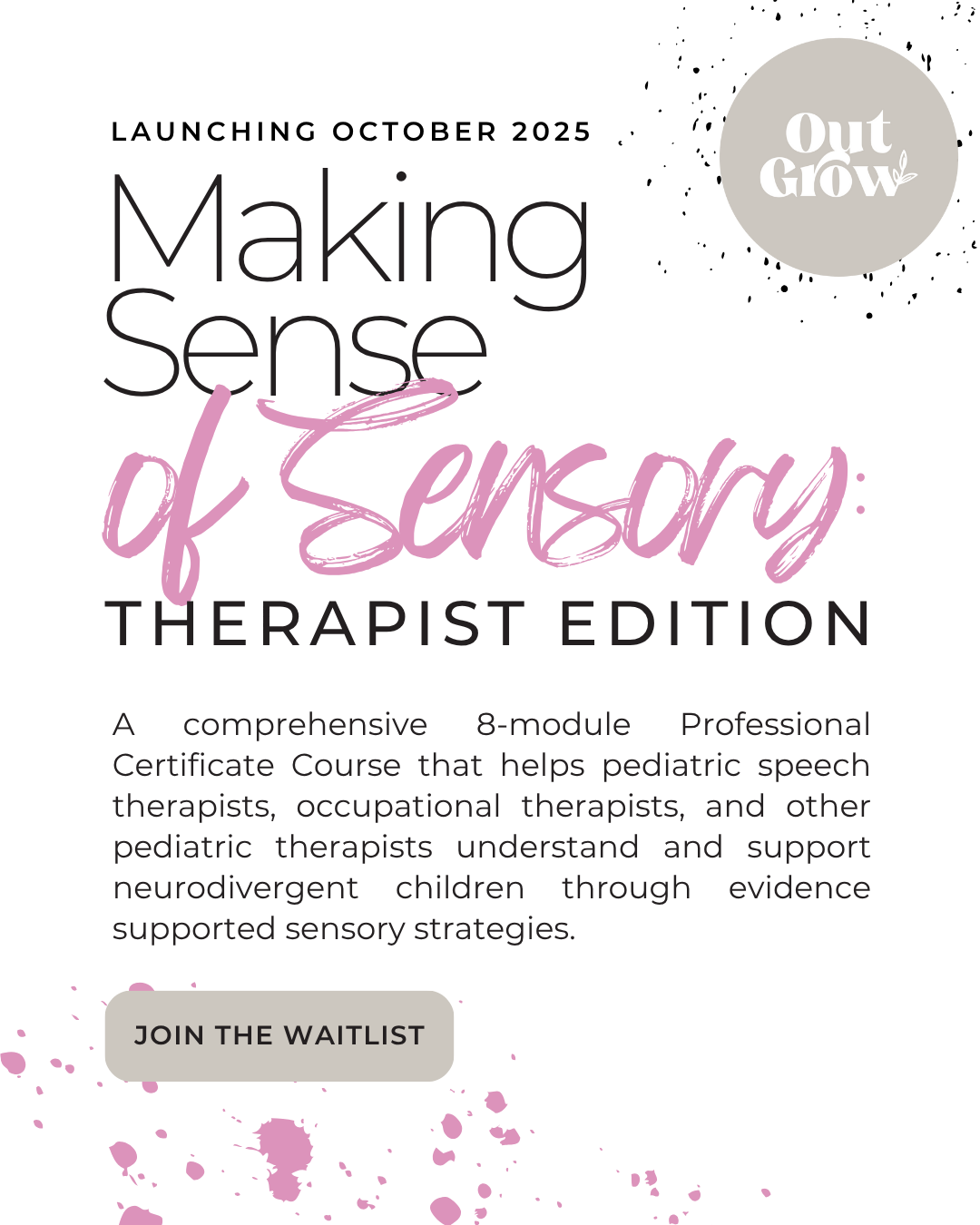Why Every Pediatric Therapist Needs to Understand Sensory Systems
In almost every clinic, you’ll see bins of play-dough, swings, crash pads, fidgets, or balance boards. And while these tools can be powerful, here’s the truth: not all sensory play is regulating.
Why? Because each child experiences input through eight different sensory systems, not just five, and each system can look very different depending on whether a child is seeking or avoiding input. What calms one child may completely overwhelm another. If we don’t understand these systems, we’re left guessing at why one strategy works while another fails.
The Eight Systems (Not Five!)
Most of us were taught about the “big five” senses, but there are actually eight:
👀 visual (sight)
👂🏻 auditory (sound)
👐🏽 tactile (touch )
👅 gustatory (taste)
👃🏼 olfactory (smell )
🧘🏼 proprioception (body awareness)
🤸🏿 vestibular (balance and movement)
🍕 interoception (internal body signals like hunger, pain, and emotion).
Each of these systems influences how a child feels, engages, and learns. And each has its own thresholds. Some kids crave more input, some avoid it, and many fluctuate day by day.
A child who throws themselves into the crash pad might be seeking proprioceptive input to feel grounded. Another may avoid finger paints, not because they are “defiant,” but because tactile input feels overwhelming. One child may spin endlessly on the swing for regulation, while another may shut down after a single push. These are not quirks. They are the nervous system communicating needs.
Why This Matters for Pediatric Therapists
When we treat “sensory” as one big category, it is easy to assume that any sensory play is helpful. But without knowing which system is involved, and whether the child is seeking or avoiding that input, we can actually add to dysregulation instead of reducing it.
For example, you may try a noisy movement game before a speech activity, thinking it will “wake up” the child. But if they are already sensitive to sound, you may have made communication harder. You might offer a child a fidget during table work, but if their system craves movement, a stress ball will not meet that need. They may need chair push-ups or wall pushes instead.
Understanding all eight sensory systems helps us match strategies to real needs instead of applying a one-size-fits-all approach. This is where sensory integration becomes a core part of effective pediatric therapy.
The Research Backs This Up
Jean Ayres’ early work in sensory integration laid the foundation for this lens and later research reinforced the connection. Schaaf and Mailloux (2015) showed that sensory-informed interventions improve participation in everyday life. Lane, Reynolds, and Dumenci (2012) found direct links between sensory modulation differences and challenges with attention, social connection, and regulation.
The message is clear: if we do not look deeper than “sensory equals regulating,” we are missing the real picture.
What Changes When Therapists Understand All Eight Sensory Systems
When we truly understand all eight sensory systems, the way we look at kids changes. Instead of saying, “they need a sensory break,” we start asking, “which system is involved here? Are they seeking or avoiding?". That shift makes our observations more meaningful.
Our strategies get sharper too. Rather than pulling out random tools or activities and hoping something works, we can offer individualized sensory supports that actually help the child reset.
And the progress sticks. Kids who feel regulated are more present and available for therapy, which means the speech, motor, or behavior goals we are targeting have a much better chance of carrying over into the real world. Over time, kids also start to recognize their own needs. They begin to show us what works for them, and even communicate it. That is where we see confidence grow, along with self-awareness and self-advocacy. These are skills that matter far beyond our sessions.
Why We Built This Course for Therapists
This is the heart behind Making Sense of Sensory™: Therapist Edition. We created it for pediatric therapists of every discipline including OTs, SLPs, PTs, BCBAs, RBTs, and counselors because all of us work with neurodivergent children whose sensory processing differences directly impact their ability to engage and learn.
The course breaks down each sensory system, shows you how to spot seeking versus avoiding behaviors, and gives you strategies that match the child’s specific needs. It is not about adding more random sensory play into your sessions. It is about knowing why one approach works while another does not.
Because when we understand all eight sensory systems, we stop guessing. We stop just managing behavior. And we start helping kids truly thrive.
Ready to take the next step? Join the waitlist for Making Sense of Sensory™, coming soon! Your clients, and your sessions, will thank you.



